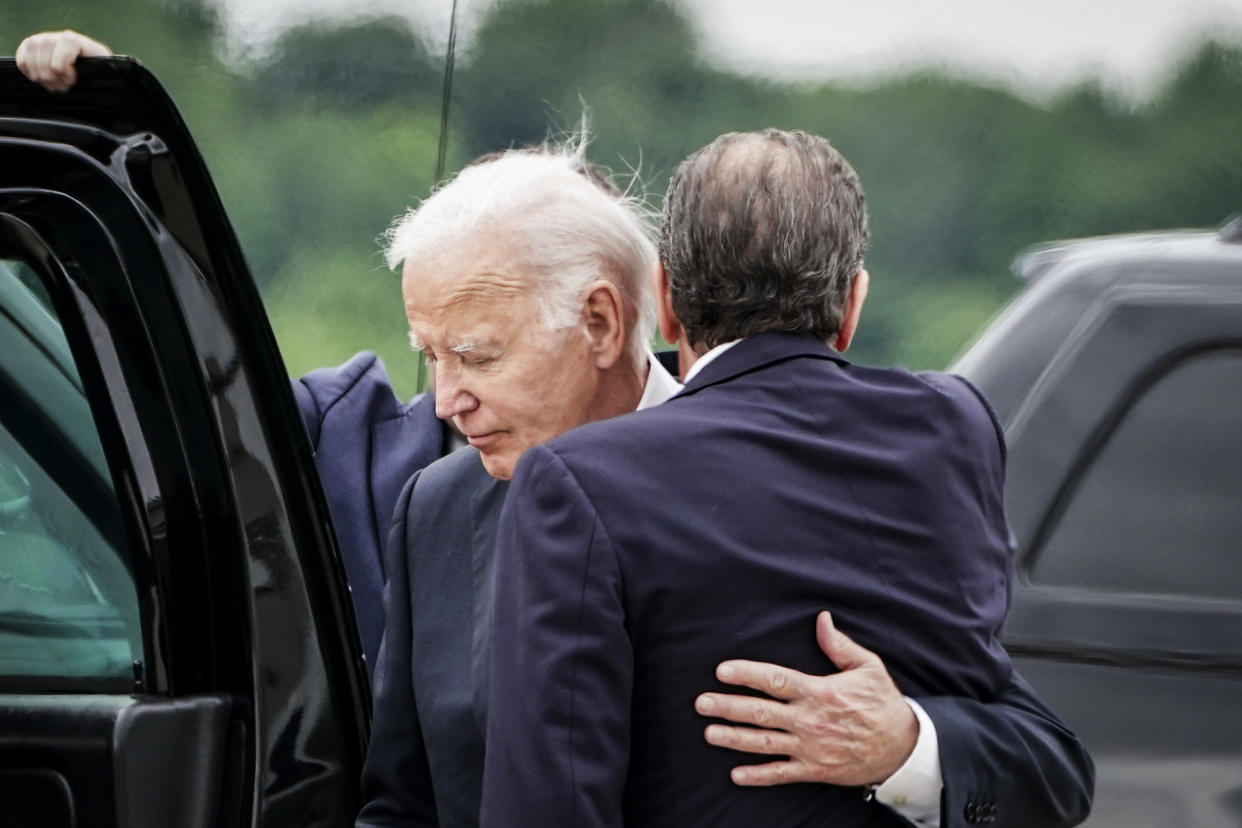Biden Shut the Border to Asylum Seekers. The Question Is Whether the Order Can Be Enforced.

As of 12:01 a.m. Wednesday, the U.S. border with Mexico was shut down to nearly all migrants seeking asylum in the United States.
The drastic action, the result of an executive order signed by President Joe Biden, was designed to keep the border closed at least through Election Day and defuse one of the president’s biggest vulnerabilities in his campaign against former President Donald Trump.
Sign up for The Morning newsletter from the New York Times
The question is how broadly it can be enforced, especially along a 2,000-mile border that does not have nearly the capacity to manage the number of people who want to enter the United States.
As of Wednesday morning and into Thursday, the order appeared to be working, although it was still too early to make a real assessment. Migrants in the border towns of Mexicali and Ciudad Juárez were being turned away, and the word was spreading.
In Mexicali, Guadalupe Olmos, a 33-year-old mother, said that when she heard about the new policy, she wept, and said it was now pointless to try to enter the United States. Last year, she said, gunmen shot up her car, killing her husband. She and her three children survived and have been trying to get out of Mexico.
“It is not going to happen anymore,” Olmos said. “Yesterday, they told us that this is over.”
Before the new restrictions went into effect, migrants would seek out border agents and surrender, knowing that anyone who stepped foot on U.S. soil could ask for asylum. Often, they would be released into the United States to wait, sometimes for years, for their cases to come up.
Biden’s new order prevents that. But there are plenty of ways for people to get into the country along the border — running from California to Texas — particularly without any new resources to help guard the frontier.
The office of the U.S. Customs and Border Protection releases the number of crossings every month, so it will be weeks before the effects of Biden’s directive begin to become clear.
But the main problem for the White House is that Republicans have blocked billions in funding that would have helped enforce the order, raising questions about just how transformative it will be at a moment of massive migration around the world.
“None of this solves the long-term problems,” said John Sandweg, who was a top official at the Department of Homeland Security during the Obama administration. “Until Congress acts, we’re still going to have major problems at the border.”
Biden, under enormous political pressure to address illegal immigration, issued the executive action this week after Republicans in Congress torpedoed a bipartisan bill in February that also would have shut down the border.
The key difference between that legislation and Biden’s executive order is money. Biden cannot use his executive authority to send billions of dollars in resources to the border; he needs Congress to do that.
But Trump, who has made being tough on immigration a hallmark of his political brand, had called on Republicans to kill the legislation, even though it included some of the most restrictive measures Congress has contemplated in years.
On Tuesday, Biden blamed Republicans for forcing his hand but said the “simple truth” was that he needed to secure the border.
He will have to do that without the money that was in the bill, including more than $7 billion to Immigration and Customs Enforcement for deportation flights and other expenses; $4 billion to U.S. Citizenship and Immigration Services for asylum officers; and more than $6 billion for U.S. Customs and Border Protection for more border agents and other resources.
The legislation also would have paid for more immigration judges to try to plow through a backlog of 2 million asylum cases.
The new restrictions lift only when the number of illegal crossings drops to fewer than 1,500 for seven days in a row and stays that way for two weeks. The numbers have not been that low in years; in December, there were some 10,000 illegal crossings every day.
More recently, the figures have hovered around 3,000 crossings per day.
If the numbers do fall below the threshold, they will kick in again once the seven-day average for daily illegal crossings hits 2,500 — a regular occurrence now.
Assuming the executive order survives legal challenges, which are expected, it could be in effect for months or longer.
“The threshold that they set is incredibly, unrealistically low for a moment of historic worldwide migration,” said Adam Isacson of the Washington Office on Latin America, a human rights organization. “That’s no mathematical accident: It is low enough to guarantee that the right to asylum between ports of entry won’t come back anytime soon.”
The new policy changed the plans of Ibeth María del Villar San Juan, who arrived in Ciudad Juárez from Venezuela on Monday with her husband and 8-year-old daughter.
The family had planned to cross the Rio Grande and turn themselves in to U.S. border agents. But after learning that if they crossed illegally they could lose the possibility of receiving asylum, they decided to stay in Mexico to plan their next move.
“One crosses with the expectation of receiving asylum,” she said, “but if now we can lose the opportunity, we’d better wait.”
c.2024 The New York Times Company


